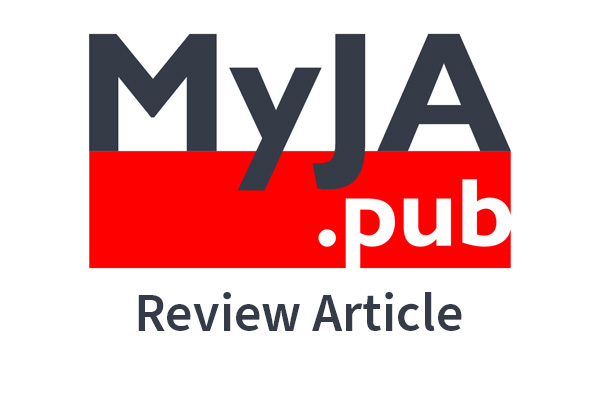Keywords
Abstract
Inadequate nutrition delivery remains a pervasive issue in critically ill patients, with significant challenges in accurately measuring nutritional requirements and personalising nutrition. Current medical nutrition therapy is constrained by difficulty in objectively measuring nutritional requirements and patient responses. Both enteral and parenteral nutrition are effective, but achieving and assessing nutritional targets pose substantial challenges. The adoption of computerised nutrition monitoring is on the rise, with future strategies potentially incorporating advanced muscle monitoring tools such as ultrasound and bioelectrical impedance analysis (BIA). Early enteral nutrition has been shown to reduce complications and shorten ICU stays; however, it should be delayed in specific conditions such as gastrointestinal bleeding. When EN is not feasible, PN serves as a safe alternative. Indirect calorimetry offers a method to measure energy expenditure and guide nutritional interventions, though larger trials are necessary to validate its benefits in personalised nutrition strategies. Significant muscle mass loss is prevalent in ICU patients, necessitating optimal amino acid delivery. Protein intake should be tailored to lean mass rather than total body weight, and bedside techniques like BIA and muscle ultrasound can aid in personalising protein delivery. While high protein intake may help mitigate muscle loss, its effect on clinical outcomes remains debated. Further trials are essential to enhance personalised ICU nutrition and improve patient outcomes throughout their ICU and post-ICU care journey.
References
Stumpf F, Keller B, Gressies C, Schuetz P. Inflammation and Nutrition: Friend or Foe? Nutrients. 2023;15(5). https://doi.org/10.3390/nu15051159
Lew CCH, Yandell R, Fraser RJL, Chua AP, Chong MFF, Miller M. Association Between Malnutrition and Clinical Outcomes in the Intensive Care Unit: A Systematic Review [Formula: see text]. JPEN J Parenter Enteral Nutr. 2017;41(5):744-58. https://doi.org/10.1177/0148607115625638
Fazzini B, Märkl T, Costas C, et al. The rate and assessment of muscle wasting during critical illness: a systematic review and meta-analysis. Crit Care. 2023;27(1):2. https://doi.org/10.1186/s13054-022-04253-0
Vincent JL. Give your patient a fast hug (at least) once a day. Crit Care Med. 2005;33(6):1225-9. https://doi.org/10.1097/01.ccm.0000165962.16682.46
Ferrie S. What is nutritional assessment? A quick guide for critical care clinicians. Aust Crit Care. 2020;33(3):295-9. https://doi.org/10.1016/j.aucc.2020.02.005
World Health Organization. Malnutrition [Internet]. 2024 [cited 2024 May 30]. Available from: https://www.who.int/news-room/fact-sheets/detail/malnutrition
Di Vincenzo O, Luisi MLE, Alicante P, et al. The Assessment of the Risk of Malnutrition (Undernutrition) in Stroke Patients. Nutrients. 2023;15(3). https://doi.org/10.3390/nu15030683
Singer P, Blaser AR, Berger MM, et al. ESPEN practical and partially revised guideline: Clinical nutrition in the intensive care unit. Clin Nutr. 2023;42(9):1671-89. https://doi.org/10.1016/j.clnu.2023.07.011
Cederholm T, Jensen GL, Correia M, Gonzalez MC, Fukushima R, Higashiguchi T, et al. GLIM criteria for the diagnosis of malnutrition - A consensus report from the global clinical nutrition community. Clin Nutr. 2019;38(1):1-9. https://doi.org/10.1016/j.clnu.2018.08.002
Domenech-Briz V, Gea-Caballero V, Czapla M, et al. Importance of nutritional assessment tools in the critically ill patient: A systematic review. Front Nutr. 2022;9:1073782. https://doi.org/10.3389/fnut.2022.1073782
Moonen H, Van Zanten ARH. Bioelectric impedance analysis for body composition measurement and other potential clinical applications in critical illness. Curr Opin Crit Care. 2021;27(4):344-53. https://doi.org/10.1097/mcc.0000000000000840
Koo BK. Assessment of Muscle Quantity, Quality and Function. J Obes Metab Syndr. 2022;31(1):9-16. https://doi.org/10.7570/jomes22025
Gallagher D, Heymsfield SB, Heo M, Jebb SA, Murgatroyd PR, Sakamoto Y. Healthy percentage body fat ranges: an approach for developing guidelines based on body mass index. Am J Clin Nutr. 2000;72(3):694-701. https://doi.org/10.1093/ajcn/72.3.694
Narayan SK, Gudivada KK, Krishna B. Assessment of Nutritional Status in the Critically Ill. Indian J Crit Care Med. 2020;24(Suppl 4):S152-s6. https://doi.org/10.5005/jp-journals-10071-23617
Al-Dorzi HM, Arabi YM. Nutrition support for critically ill patients. JPEN J Parenter Enteral Nutr. 2021;45(S2):47-59. https://doi.org/10.1002/jpen.2228
Dixit SB, Tiwari NR, Zirpe KG, et al. How Have Nutrition Practices in the ICU Changed in the Last Decade (2011-2020): A Scoping Review. Cureus. 2021;13(6):e15422. https://doi.org/10.7759/cureus.15422
Servia-Goixart L, Lopez-Delgado JC, Grau-Carmona T, et al. Evaluation of Nutritional Practices in the Critical Care patient (The ENPIC study): Does nutrition really affect ICU mortality? Clin Nutr ESPEN. 2022;47:325-32. https://doi.org/10.1016/j.clnesp.2021.11.018
Oshima T, Berger MM, De Waele E, et al. Indirect calorimetry in nutritional therapy. A position paper by the ICALIC study group. Clin Nutr. 2017;36(3):651-62. https://doi.org/10.1016/j.clnu.2016.06.010
Niederer LE, Miller H, Haines KL, et al. Prolonged progressive hypermetabolism during COVID-19 hospitalization undetected by common predictive energy equations. Clin Nutr ESPEN. 2021;45:341-50. https://doi.org/10.1016/j.clnesp.2021.07.021
Pertzov B, Bar-Yoseph H, Menndel Y, et al. The effect of indirect calorimetry guided isocaloric nutrition on mortality in critically ill patients-a systematic review and meta-analysis. Eur J Clin Nutr. 2022;76(1):5-15. https://doi.org/10.1038/s41430-021-00919-0
Singer P, De Waele E, Sanchez C, et al. TICACOS international: A multi-center, randomized, prospective controlled study comparing tight calorie control versus Liberal calorie administration study. Clin Nutr. 2021;40(2):380-7. https://doi.org/10.1016/j.clnu.2020.05.024
Tah PC, Lee ZY, Poh BK, et al. A Single-Center Prospective Observational Study Comparing Resting Energy Expenditure in Different Phases of Critical Illness: Indirect Calorimetry Versus Predictive Equations. Crit Care Med. 2020;48(5):e380-e90. https://doi.org/10.1097/ccm.0000000000004282
Tah PC, Poh BK, Kee CC, et al. Do we need different predictive equations for the acute and late phases of critical illness? A prospective observational study with repeated indirect calorimetry measurements. Eur J Clin Nutr. 2022;76(4):527-34. https://doi.org/10.1038/s41430-021-00999-y
Compher C, Bingham AL, McCall M, et al. Guidelines for the provision of nutrition support therapy in the adult critically ill patient: The American Society for Parenteral and Enteral Nutrition. JPEN J Parenter Enteral Nutr. 2022;46(1):12-41. https://doi.org/10.1002/jpen.2267
Koekkoek WAC, Xiaochen G, van Dijk D, van Zanten ARH. Resting energy expenditure by indirect calorimetry versus the ventilator-VCO(2) derived method in critically ill patients: The DREAMVCO(2) prospective comparative study. Clin Nutr ESPEN. 2020;39:137-43. https://doi.org/10.1016/j.clnesp.2020.07.005
Wischmeyer PE, Bear DE, Berger MM, et al. Personalized nutrition therapy in critical care: 10 expert recommendations. Crit Care. 2023;27(1):261. https://doi.org/10.1186/s13054-023-04539-x
Zusman O, Theilla M, Cohen J, Kagan I, Bendavid I, Singer P. Resting energy expenditure, calorie and protein consumption in critically ill patients: a retrospective cohort study. Crit Care. 2016;20(1):367. https://doi.org/10.1186/s13054-016-1538-4
Chapple LS, Kouw IWK, Summers MJ, et al. Muscle Protein Synthesis after Protein Administration in Critical Illness. Am J Respir Crit Care Med. 2022;206(6):740-9. https://doi.org/10.1164/rccm.202112-2780OC
Hermans AJH, Laarhuis BI, Kouw IWK, van Zanten ARH. Current insights in ICU nutrition: tailored nutrition. Curr Opin Crit Care. 2023;29(2):101-7. https://doi.org/10.1097/mcc.0000000000001016






